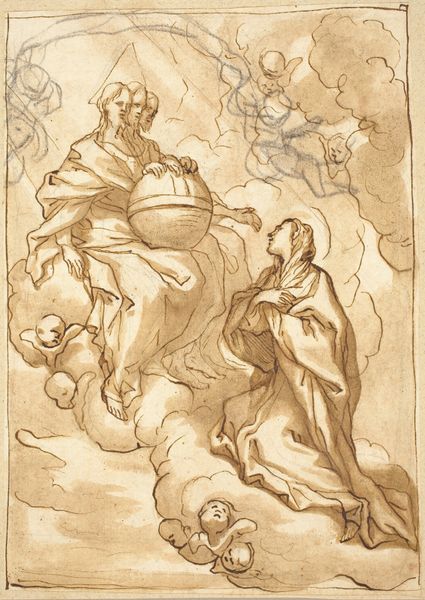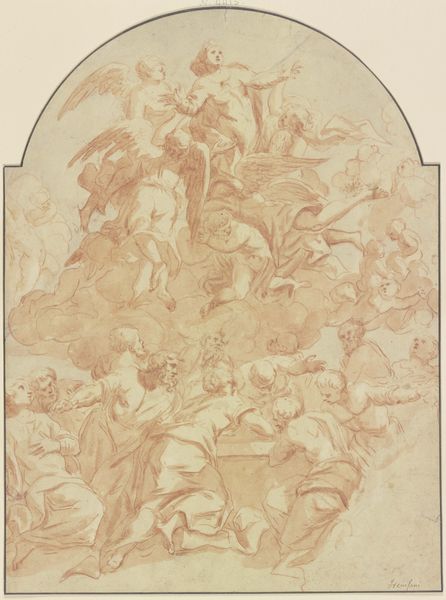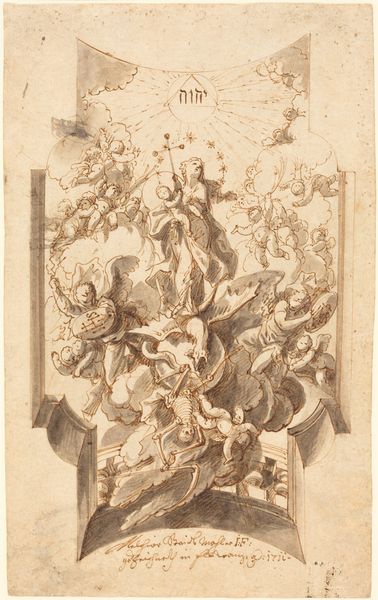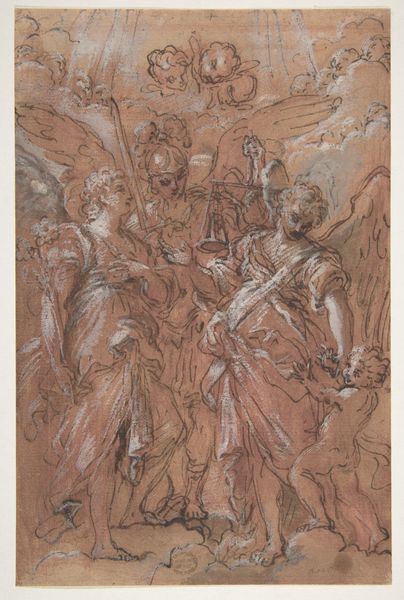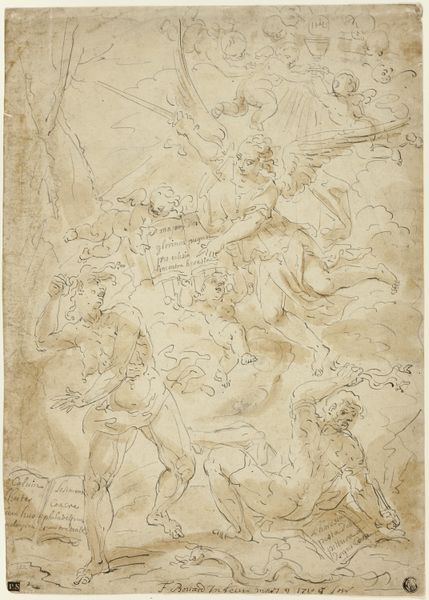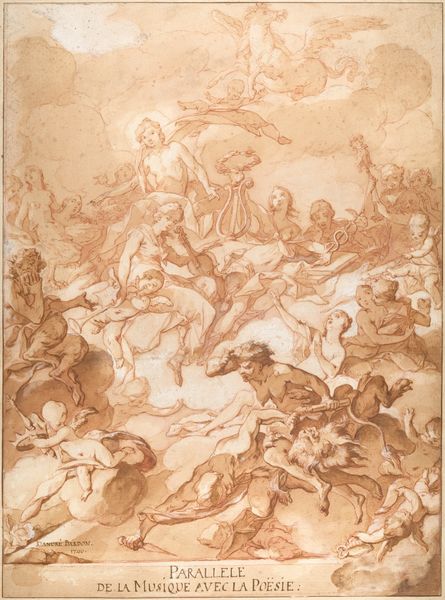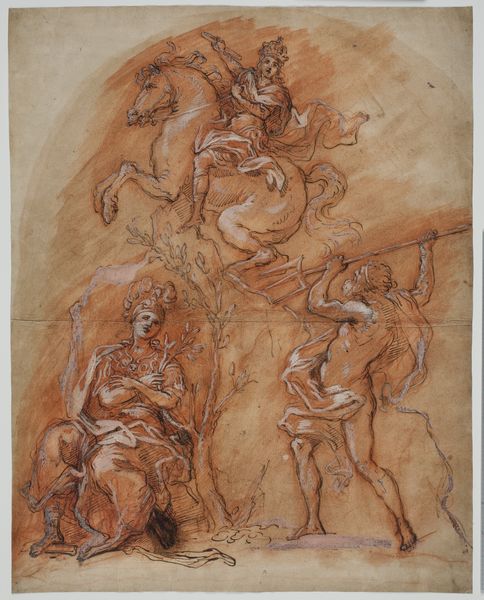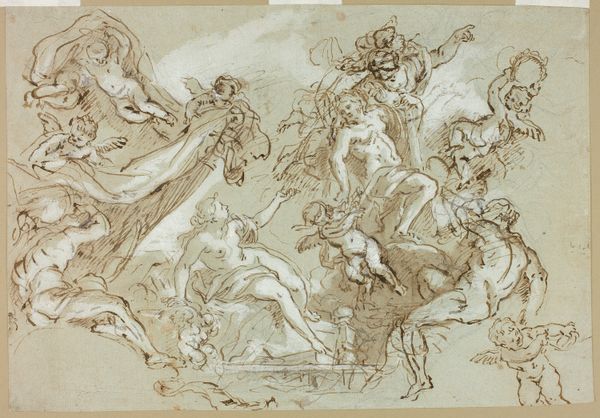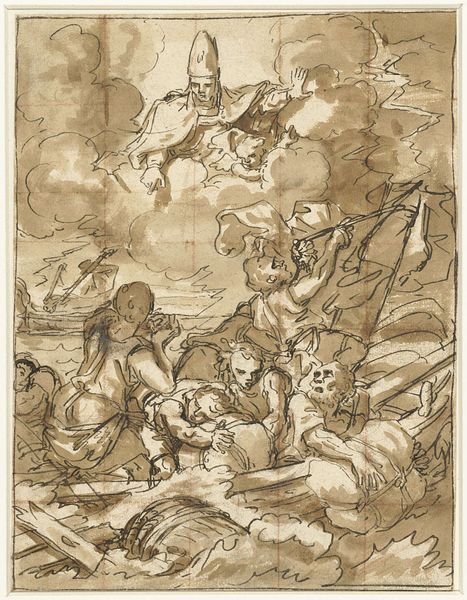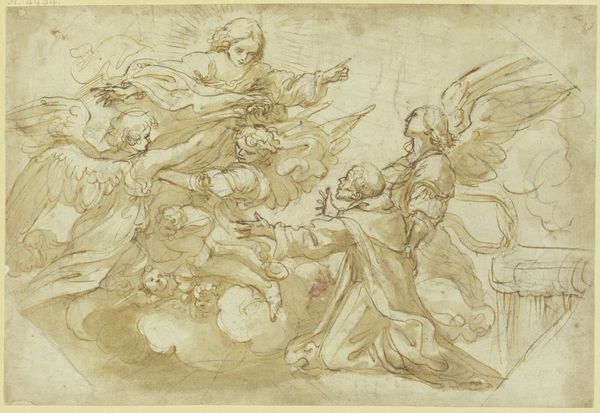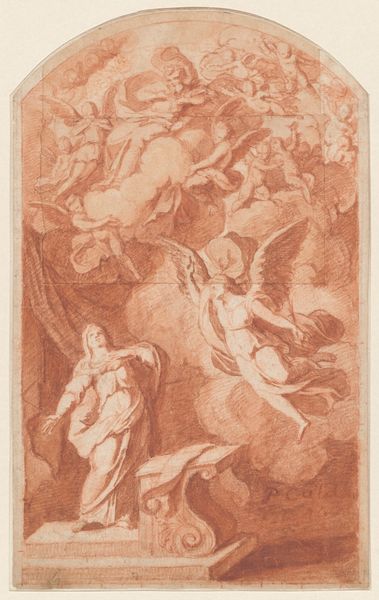
drawing, ink
#
portrait
#
drawing
#
allegory
#
baroque
#
ink painting
#
figuration
#
ink
#
line
#
history-painting
#
watercolor
Dimensions: 418 mm (height) x 295 mm (width) (bladmaal)
Curator: This captivating artwork is "Ascension of St Mary Magdalen," created by Domenico Piola sometime between 1627 and 1703. It is currently held in the collection of the SMK, the Statens Museum for Kunst. Editor: It strikes me immediately as airy, even weightless. The figures seem to dissolve into the sky, a very fluid composition overall despite the definite lines of the medium. The monochrome wash emphasizes the ethereal quality. Curator: It's important to note that Piola primarily worked in pen and ink to render this vision. The paper support itself becomes part of the reading, not simply as a surface to bear imagery but a sign of a mode of making in a specific sociohistorical context. Consider the accessibility of drawing and how preparatory drawings function within workshop labor practices, revealing how many hands may have played a part. Editor: I find the ascending figure of Mary Magdalen incredibly compelling. The skull and cross at the bottom sharply contrast with her upward gaze, which evokes an intensely personal, ecstatic encounter with the divine. This ascent symbolizes purification, a liberation from earthly suffering into heavenly glory. What do you think, given your awareness of this artistic period? Curator: Piola’s choice of ink reflects the accessibility and relative affordability of this material, indicative of wider Baroque practices during the period, yet also his specific patron and market considerations. He is choosing to represent transcendence while constrained by the immediate material realities available in production. Even with allegorical and spiritual paintings, economic considerations leave their trace! Editor: Precisely, because those material considerations highlight choices, which are always significant. Think about the carefully placed putti around Mary Magdalen; in Christian iconography, they often represent souls, innocence, or divine love lifting her—both physically and spiritually. They reflect the Baroque period’s obsession with conveying deep emotional resonance. Curator: Considering ink as the core material shifts our focus towards the practical skills of draftsmen who created the piece and potentially countless related iterations for reproductive prints and paintings and situates us in the workshop itself. The finished work we see as museum-goers bears traces of an assembly line more akin to manufacturing than divine inspiration! Editor: So much richness emerges when different perspectives meet like this! Thinking about these multiple layers of context alongside such charged imagery—it reveals complex narratives indeed.
Comments
No comments
Be the first to comment and join the conversation on the ultimate creative platform.
